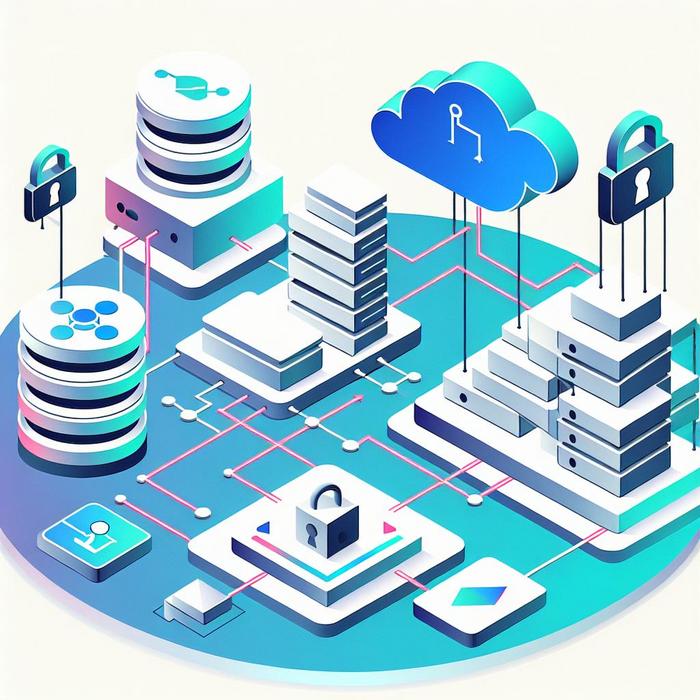Table of Contents Hide
Choosing the Right Data Observability Platform for Growth
 7 MIN. READING
7 MIN. READING
Why is Choosing the Right Data Observability Platform Essential for Growth?
CIOs, CTOs, data architects, database administrators, and IT leaders are tasked with making strategic decisions that significantly impact their company’s growth. The choice of the right data observability platform plays an integral role in these strategic decisions. But how does a platform like this catalyze growth? And what factors should one consider while choosing a platform?
Unifying Data Access: The Cornerstone of Growth
Database virtualization is a crucial strategy employed by data-intensive industries. By creating a virtual data layer that unifies access to data across disparate sources without the need for data movement or replication, industries are able to achieve faster and more efficient provisioning for testing, development, and analytics.
Consider the necessity of this strategy in today’s fast-paced business environment. Let’s say we need to access a specific customer’s transactional data from various time periods. This information could be scattered across multiple databases. With a traditional approach, obtaining this data would involve navigating through each database individually—a lethargic and time-consuming process. But with database virtualization, this data can be accessed conveniently and quickly from a single source, thus boosting efficiency significantly.
A Deeper Dive into Database Virtualization
Database virtualization is more than just data unification—it is the backbone of an effective data observability platform. At its core, it is about ensuring data quality, data provisioning, data anonymization, and compliance with data regulations. This multi-faceted role necessitates a robust and scalable platform to support these functions effectively.
Data quality is perhaps the most critical aspect. A data observability platform ensures the accuracy and relevance of the data being accessed, making it reliable for making strategic decisions.
Data provisioning, on the other hand, is about providing the necessary data for specific operations in a timely and efficient manner. This includes not just operational data, but also statistical data for analytics and decision-making.
Data anonymization refers to the process of protecting sensitive data by making it impossible to identify the individuals it belongs to. This is particularly important in industries dealing with confidential customer or patient data, where data anonymization is a legal requirement.
Comparing Major Data Observability Platforms
While a plethora of data observability platforms are available in the market today, it is essential to choose one that aligns with your industry’s specific needs and growth objectives.
Consider a platform’s scalability. As your company grows, so do your data requirements. A platform that can scale with your needs is essential for long-term growth.
A platform’s capacity for integration is also a key consideration. It should be able to seamlessly integrate with your existing technology stack, ensuring a smoother workflow.
Lastly, consider the platform’s compliance features. The platform should have robust mechanisms for data anonymization, thereby ensuring compliance with data regulations.
Embracing the Future with Data Observability
In conclusion, choosing the right data observability platform is an integral part of your industry’s growth strategy. It isn’t merely about managing your data – it about leveraging it for strategic decisions, ensuring its quality, maintaining its relevance, and ensuring compliance with data regulations. By choosing a platform that is scalable, integration-friendly, and robust in its compliance features, you’re setting your industry up for sustainable growth.
Remember, the right data observability platform isn’t just a tool – it’s a growth catalyst. By providing efficient access to quality data, it equips you with the knowledge and insights to make strategic decisions that drive growth. If you’re interested in learning more, consider exploring this resource or delve deeper into cloud solutions and automating compliance.
Emboldening the Role of Data in Strategic Decision-Making
Data isn’t just a tool in strategic decision making — it’s the bedrock upon which these decisions rest. To fully harness the power of your data, consider implementing advanced data solutions tailored specifically to your industry’s needs. As you embrace these changes, remember that the path to success involves equipping your data not just with the right tools, but with the right strategies as well.
Crafting Advanced Data Solutions: The Junction of Strategy and Execution
As technology advances and the vastness of available data grows, creating advanced data solutions isn’t just a ‘nice to have’ anymore; it’s an absolute necessity. And more than just creating these solutions, organizations need to know how to strategically execute them. How are you supposed to do this?
Transforming a heterogeneous collection of data into unified, actionable insights is facilitated greatly by the right data observability platform. By connecting disparate sources, these platforms enable pivotal information to flow freely, accessible across multiple points and to multiple users on demand.
Integration, seamlessness, and usability are non-negotiable aspects on such platforms. Consider the implications if these aren’t met: inefficiencies, security vulnerabilities, and even compliance risks. Consequences not only detrimental to operations, but which could potentially have serious legal implications.
The Relevance of Data Anonymization in Compliance
As organizations depend on the broad utilization of data in day-to-day operations, often from various sources – both internal and external – the concern of data privacy comes to the forefront.
Data anonymization is the method employed to ensure that sensitive data remains where it should be – private and protected. Utilizing platforms that incorporate data anonymization techniques is imperative in maintaining compliance with data regulations. It satisfies the need to protect individualistical data, while still providing the necessary insights for intelligent business decision-making.
Understanding how to incorporate data anonymization techniques can be a complicated process, but luckily, there are resources available that can guide you through.
Strategies for Optimizing Realistic Test Data
It’s pretty straightforward enough to understand the importance of data in operations and decision-making. Though, what many don’t realize is the importance of the utilization of realistic test data for efficient operations.
Realistic test data aids in pointing out potential problems, performance bottlenecks, and data integration issues that might not be so apparent in day-to-day operations. The effective use of realistic test data can boost the effectiveness of your business operations by deploying a solution that is tested and proven to withstand various scenarios.
Analytics: Turning Data into Insights
Beyond just managing and scrutinizing data, the core focus should be on turning these data sets into meaningful insights. Filters and classifications, essential components of analytics, provide an intuitive way to navigate data and find correlations, patterns, trends, and related insights.
Your platform’s analytics capabilities should be robust enough to swiftly provide accurate and functional insights, thereby empowering executives and decision-makers with precise and timely data which they can use to enhance business strategies, performance, and overall growth. With the constant evolution of business demands, having a reliable analytics tool in your platform arms you with the ability not only to navigate the present but also to anticipate the future.
Harnessing data should not just be about acquisition but also effective utilization. Understanding the need to merge data science with business strategies underlines the importance of selecting the right data platforms. The very essence of these strategies lies in how efficiently and seamlessly they facilitate data operations. It all comes down to the strategy, the execution, and the tools that bring it all together.
To ensure this delicate balance, the right platform is key – it forms the stepping stone to a sustainable growth strategy. The perfect amalgamation of scalability, integration, compliance, and robustness should be the crux of your decision-making process when seeking out the right platform. Happy navigating!


